Election nail-biter
It is not even over yet … Project Blue v2.0 … And good award, bad timing.
Tucson City Councilman Kevin Dahl is narrowly holding onto his seat after last night’s nail-biter of an election between him and fellow Democrat Sadie Shaw.
Votes are still being counted in their Ward 3 race to represent Tucson’s northwest side, and it may be a few days before we officially know the winner.
Meanwhile, voters delivered decisive victories to the predictable candidates in last night’s two other city council primary races.
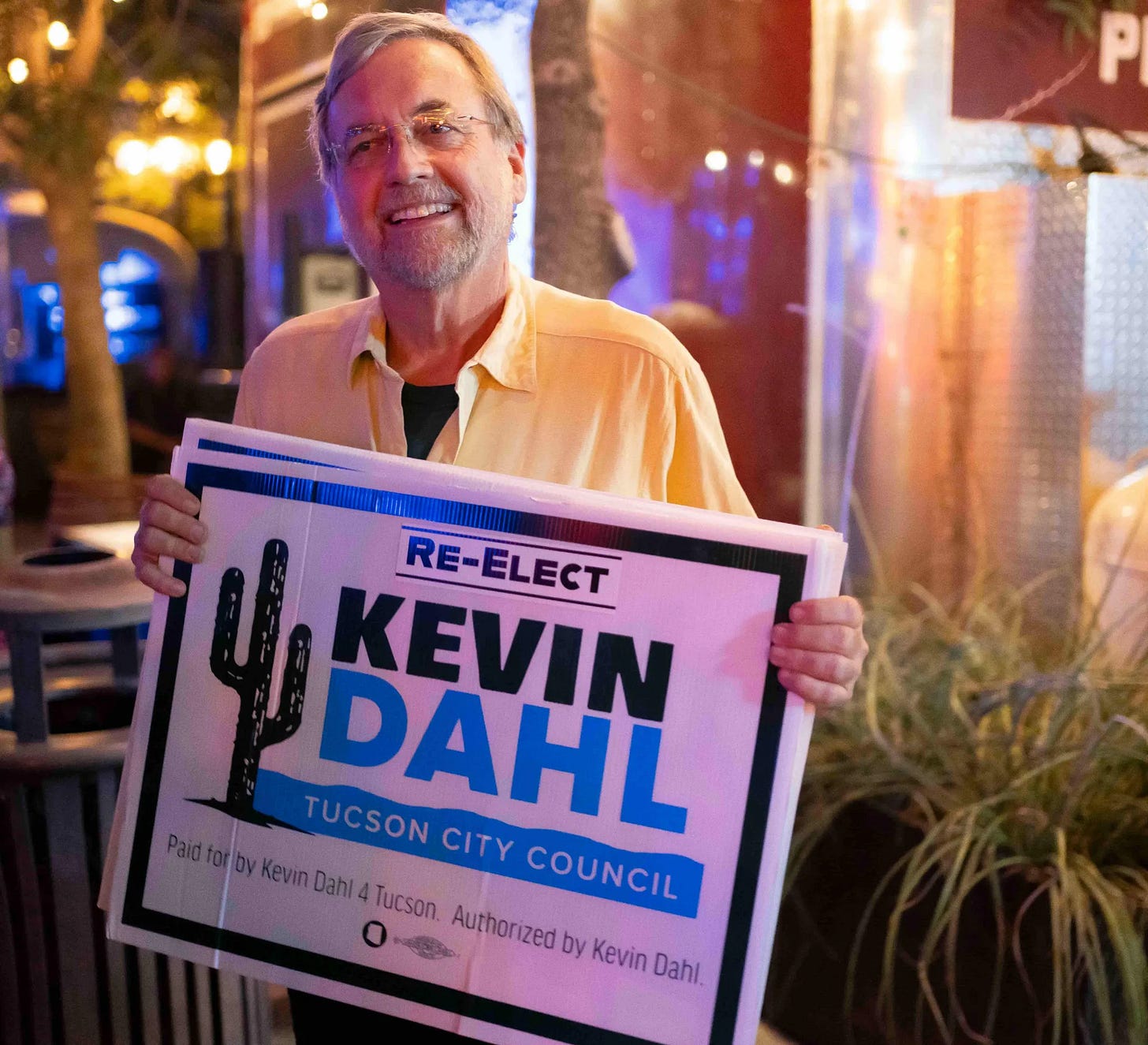
While the general election is still ahead — and two Republicans also secured their party’s nominations for the three open council seats last night — Republicans’ chances aren’t great since Tucson’s City Charter stacks the deck against GOP candidates in November.
How, you ask?
In the general election, the Charter lets every registered voter in the city cast a ballot in every ward race, not just in the ward they live in.
And while pockets of the city lean Republican — like, say, the southeast side’s Ward 4 — voters in those wards aren’t the only ones voting for their city council member. Citywide, 42% of voters are registered Democrats, compared with 22% who are Republicans.1
Thanks to that quirk in Tucson elections, the last Republican elected to the Council was Steve Kozachik in 2009 — he later switched parties, saying the GOP had moved away from him rather than the other way around.
Anyway, you’re not here for a civic history lesson… You want election results!
Let’s get to it.
Ward 3
The only race too close to call as of Tuesday night was Dahl’s reelection campaign against Shaw in Ward 3, which covers the northwest side of town.
When elections officials stopped counting ballots for the night, Dahl had 2,993 votes; Shaw had 2,855. Meaning the two were separated by just 138 votes — or about 1% of the vote.
County officials estimated they still had more than 1,800 ballots left to tabulate, so it's still possible that Shaw, a member of the Tucson Unified School District Governing Board, could take the lead if that final batch of ballots favors her heavily enough.2
A recount would only be triggered if the margin between the top two candidates is 0.5% or less of the total votes cast.
The two Democrats clashed on police funding, with Dahl arguing the Tucson Police Department needed more resources, while Shaw argued that they needed an audit of their existing resources.
And that translated to their support of the doomed Prop 414 that voters rejected earlier this year. The measure, which Dahl supported, would have increased Tucson’s sales tax to fund police and first responders, among other projects. Shaw opposed it.
But the candidates found agreement on other issues, including by both opposing the Council’s move to criminalize sleeping in city washes, and Project Blue.
Dahl quickly voiced opposition to the water-hungry Project Blue after the Pima County Board of Supervisors approved the land sale. It fits his background: 14 years with the National Parks Conservation Association and authorship of Wild Plants of the Sonoran Desert and Native Harvest: Authentic Southwestern Gardening.
During his first term, Dahl helped create the Friends of Ward 3 nonprofit, pushed to turn an empty firehouse into a homeless shelter, and supported sanctioned encampments as part of the city’s strategy for addressing homelessness.
Among those who supported Dahl were Shaw’s colleagues: all three fellow Democrats on the TUSD board backed Dahl — which could make for some awkward future meetings, considering her term on the school board doesn’t end until January 2029. Shaw would have to resign from the school board if she wins the city council election.
Republicans in Ward 3 chose Janet “JL” Wittenbraker, who ran for mayor of Tucson in 2023 and for a seat on the Pima County Board of Supervisors in 2024.
Ward 5
In the southside’s Ward 5, Democrat Selina Barajas cruised to victory, picking up about 58% of the vote in the three-way race, per Tuesday night’s results.
Her opponents included Chris Elsner, a former Peace Corps volunteer who works as the Peace Corps Prep coordinator at UA, and Jesse Lugo, a local businessman and police booster who founded “Bike in a Box,” which distributes free bicycles to kids at the holidays. Elsner stood at 8% of the vote Tuesday night, while Lugo took home about 34%.
Barajas had backing from Romero and other political power brokers, including three current members of the council and soon-to-be Congresswoman Adelita Grijalva.
A fourth-generation Tucsonan with a master’s degree in urban planning, Barajas has long been a booster of Sunnyside Unified School District, and she’s in the process of opening a coffee shop and community habitat in South Tucson.
Her campaign centered on her deep roots on the south side, and her pledge to uplift the community, whether that be through civic engagement or building business coalitions.
Barajas’ priorities include expanding resources for affordable housing, investing more in road repairs and infrastructure and prioritizing environmental justice by adding more green space and cleaning up contaminated wells in the ward.
There’s no Republican on the ballot in November in this southside ward. So last night’s victory means she’ll replace councilman Rocque Perez, who was appointed to the seat to replace longtime Councilman Richard Fimbres, who stepped down earlier this year for health reasons. Perez didn’t run for the seat.
Ward 6
Midtown voters gave the nod to Miranda Schubert, operations manager at KXCI Community Radio.
Schubert walked away with the race, taking almost 65% of the vote.
Attorney Leighton Rockafellow earned about 31%, while retired teacher James Sinex convinced about 4% of voters to support him.
Schubert had an edge, having earned endorsements from across the progressive spectrum, from Mayor Regina Romero to the Tucson branch of the Democratic Socialists of America.
An avid bike commuter and public transit booster, Schubert says she’s “totally obsessed with housing and transit.” On the campaign trail, she told voters she would have voted against the camping ban, would fight to keep Tucson buses free, and is a hard no on Project Blue.
These positions echo the other two Democratic primary winners,3 forming a likely Council voting bloc opposed to Project Blue. That puts pressure on the current Council to act before the three “hard nos” are sworn in next January.
Schubert first ran for City Council in 2021 and lost to Kozachik, who was the incumbent at the time. But the seat was wide open in this year’s race after Kozachik resigned and his seat was filled by Karin Uhlich, who did not run to hold the seat.
Republicans in Ward 6 chose Jay Tolkoff, former owner of PJ Subs, as their nominee, though, for reasons we previously noted, he’ll face a very uphill battle.
South Tucson
The recall election in South Tucson was something of a dud.
Former mayor and current Councilmember Paul Diaz spearheaded an effort to recall Mayor Roxanna Valenzuela and Councilmembers Brian Flagg and Cesar Aguirre.
But the candidates challenging them didn’t file valid paperwork, so their names weren’t actually on the ballot. They filed as write-in candidates, but it’s hard to think they ever really stood a chance.
Recall organizers sent out this sticker with their names on it to try to fix the problem, and the Pima County Elections Department said it would accept the stickers in lieu of voters actually writing in the names of the candidates.
But it didn’t help.
As of Tuesday night, all three incumbents held solid leads over their would-be replacements.
Fewer than 200 South Tucson residents voted in the recall election.
In case you haven’t heard, the developers behind Project Blue have fallen in love with Southern Arizona — and they’re now telling everyone they’re here to stay.
Even if the Tucson City Council breaks up with them in the coming weeks, the developers — dare we say Amazon Web Services — are ready to find someone else to get hitched with, as long as their thirsty desires can be met.
Councilwoman Nikki Lee confirmed in her newsletter yesterday that the developers told her that if Tucson is unwilling to approve the complicated, multi-faceted plan to invest $100 million in exchange for millions of gallons of water, they’ll move to Plan B — opening data centers outside of Tucson.
“I was told directly that this company came into our community with multiple options already identified. Some of those sites are located on federal, state, or unincorporated county land within the Tucson metropolitan area and neighboring towns. Within our watershed. Within the TEP service area. With potable (drinking) water availability,” Lee wrote.
A representative for Beale Infrastructure said at Monday night’s public hearing on Project Blue that they remain committed to building in Tucson, but shied away from discussing any Plan B.
We reached out to Beale for comment on Lee’s announcement but didn’t hear back Tuesday night.
Before we go any further, we should point out: This might be a massive bluff by the developer and its supporters here in Tucson. The timing is suspect — the developers must have known that if they told Lee about Plan B, she would immediately go public with the information she had.4
The announcement comes just ahead of today’s Tucson City Council meeting to discuss — not vote on — Project Blue. Monday night’s public meeting at the Tucson Convention Center filled the room, mostly with people loudly opposed to the current proposal.
And that potential Plan B? It’s going to be expensive.
We’ve heard rumors about Project Blue working with the town of Marana. But when we asked Tuesday night, a spokesperson for the town said they didn’t have any information. She added that she hoped to share more details soon.
While this sounds like Project Blue’s second choice, rumors of a data center in Marana have been circulating for months — possibly as a third campus for Amazon.
If it’s not Marana, the developer would likely have to build their own water treatment facility or modify an existing system in another water district.
Water in the Tucson Active Management Area (AMA) is fairly clean in most areas, but it would still need treatment if pumped from the ground. Without it, those tiny particulates would serve as grenades inside the delicate, expensive cooling systems that keep data centers running.
We can’t pin down the exact cost of a treatment facility, but for comparison, the city recently put an $86 million price tag on a very different kind of water treatment plant it’s planning to build on the northwest side.5
That would also require a permit from the state to pump water at that scale from the Tucson AMA. The only entity exempt from that requirement to handle that allotment? Tucson Water.
For everyone else — including Project Blue — that kind of pumping would have to comply with Arizona’s “safe yield” law. That means long-term groundwater pumping must be balanced by natural and artificial recharge.
Pima County Supervisor Jennifer Allen is skeptical that Project Blue is being fully transparent.
“They are proving themselves to be exactly what people think they are,” Allen said. “If they were committed to their notion of water positivity, hiring a union workforce, and being net zero carbon, they would be working with the city rather dangling this over their heads.”
For now, Lee is trying to reassess what Project Blue’s “commitment” to Tucson actually means when it comes to her vote on the current proposal in front of the Council.
“Do we want the City of Tucson, through your Mayor and Council, to be in the driver’s seat, shaping how this project moves forward with oversight, standards, and a commitment to sustainability and community benefit? Or would we rather step away, decline to move forward with annexation, and accept that the project will proceed just outside our jurisdiction, where we would have no formal role, no negotiating power, and no direct benefit?”
So now — if we believe Project Blue — there’s a decision ahead of us: stick with Plan A (or a revised version), or let them go for what’s behind Door #1.
Our pledge to you: We’ll keep covering data centers in Southern Arizona, no matter the code name.
Councilwoman Nikki Lee just picked up a shiny “Certificate of Achievement for Transparency in Action” from Data Center Reviews, an outfit that rates server barns and takes serious issue with their secrecy.
The award celebrates the 111-question interrogation she lobbed at city staff about Project Blue.
Still, in a week when any mention of “data center” makes Tucson residents break out in hives, even an award for pushing for transparency could double as a lightning rod.
And for what it’s worth, all three of the wards up for election this year are overwhelmingly Democratic anyway.
For you election math nerds, if that 1,800 outstanding vote estimate is correct, she'd need a little less than 54% of the remaining votes to take the lead.
For the purposes of this statement, it doesn’t matter who wins the Ward 3 race — they’re both publicly opposed to Project Blue.
Lee’s newsletter doesn’t usually come out on Tuesday afternoons, so we knew we'd better read that breaking news edition. Yes, Joe has the city council newsletter schedule memorized.
That plant would further treat wastewater and turn it into potable water — not quite apples to apples. The Project Blue version would require different infrastructure to pump millions of gallons daily from the aquifer. Since we’re in new territory with how much water and electricity Plan B would demand, we’re using a middle-of-the-road estimate between initial and full buildout.



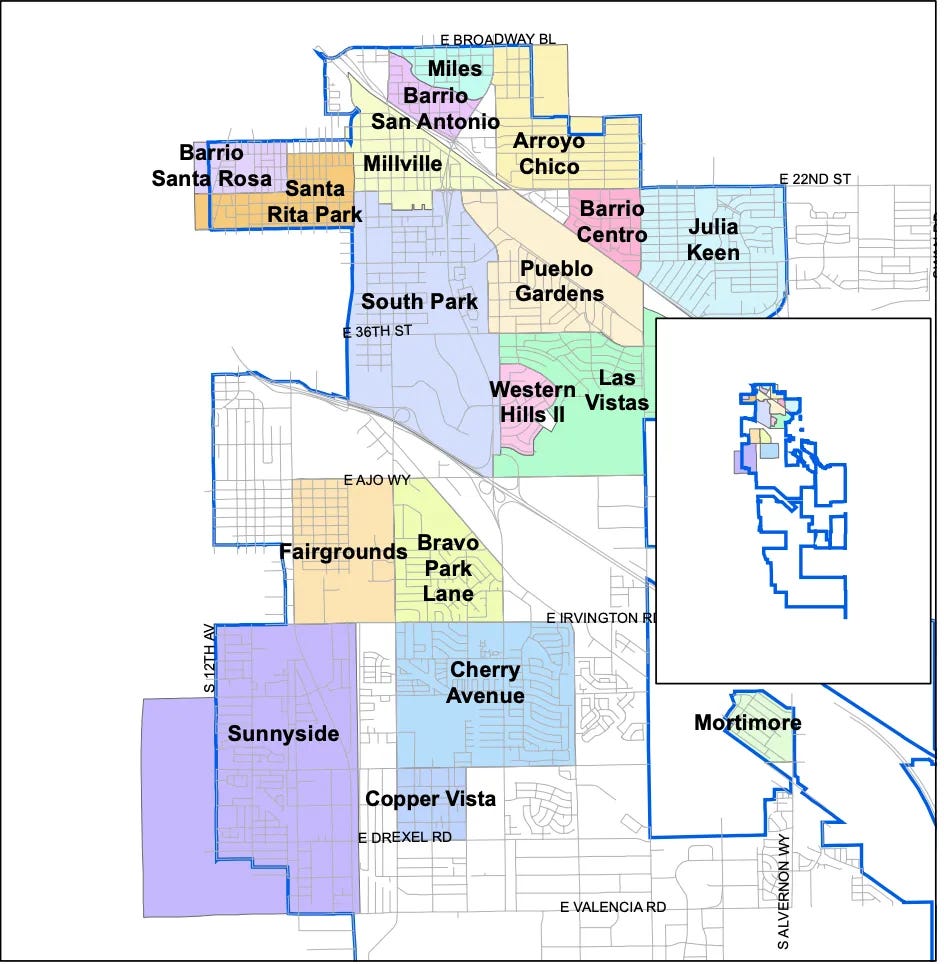
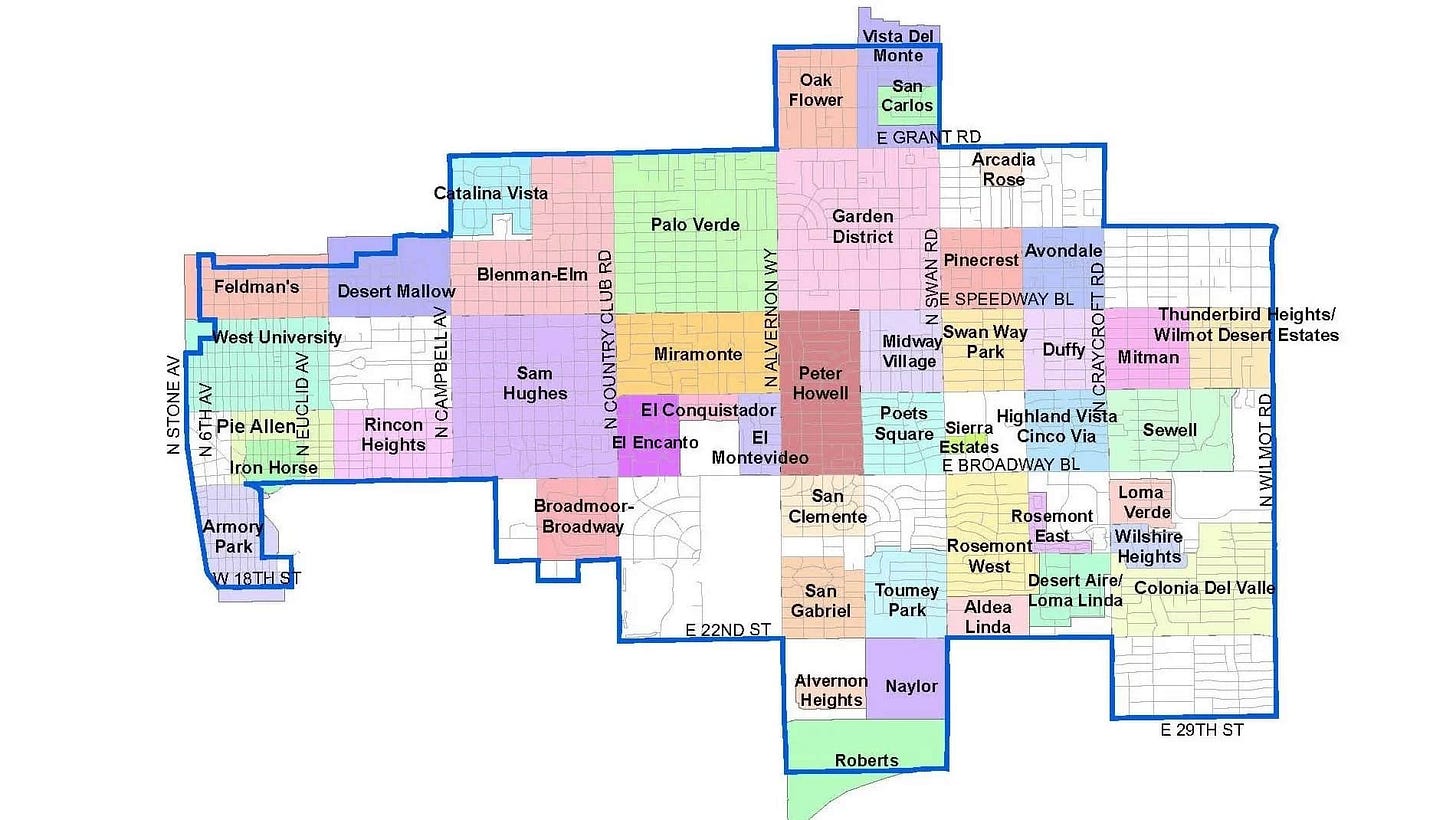
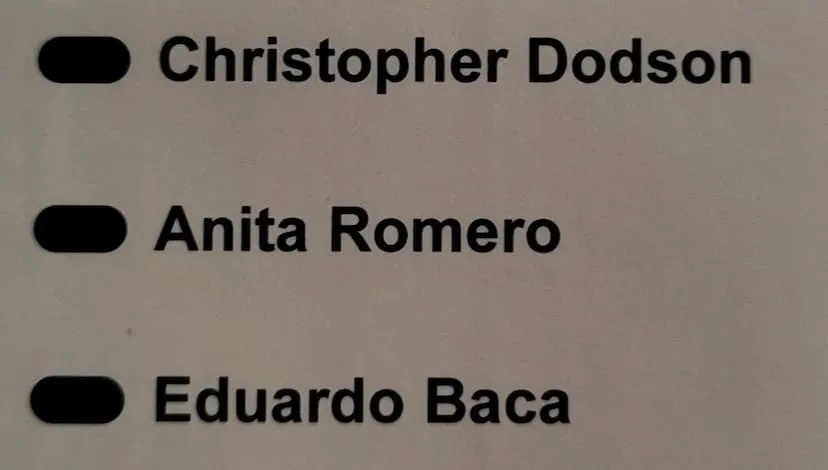

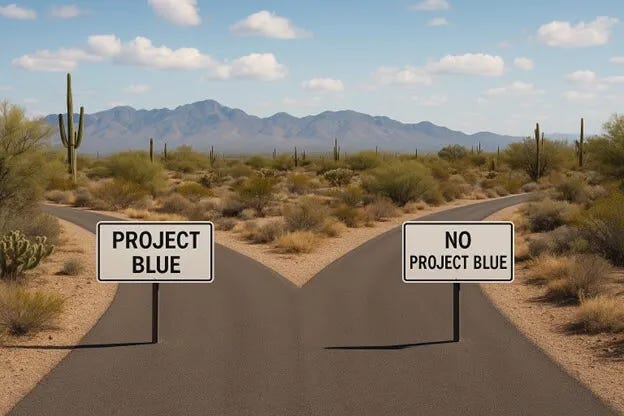

"Whether they like it or not," project Blue is coming to Tucson. Oligarchs who hide behind NDAs and high priced lawyers, don't like democracy as they think they know better. Not a coincidence that the oligarch behind Project Blue also owns the newspaper that purports to believe that democracy dies in the darkness while squashing an editorial that endorsed Kamala Harris for President. Kudos to the free and independent press for finally turning the lights on Project Blue, and shame on our elected officials for willingly keeping us in the dark for so long.
There is an alternative to the enormous energy use by Tucson Electric Power to power these AI centers and thus raising all of our electrical costs! I worked with Dr. KR Sridhar at the University of Arizona where he invented technology for potential use on Mars to extract oxygen from the carbon dioxide atmosphere. He is now the founder and CEO of Bloom Energy which is a publicly traded company that is using this technology to power AI centers throughout the world!!!